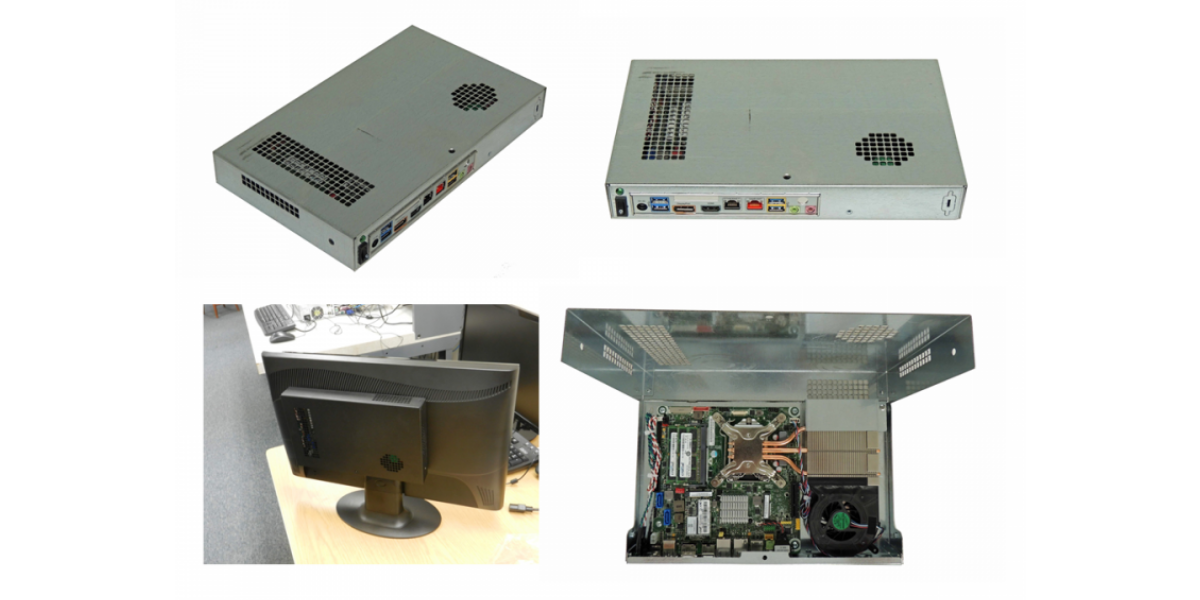The right enclosure is critical to the success of any electronic device. But when it comes to designing a new product, it’s all too common for enclosure or chassis design to be put off until late in the process. This delay can bring challenges and costs that could be avoided if enclosure design was considered sooner. Moving enclosure design to the early stages of the product development process will help ensure your enclosure fits your product well, is made of the right materials, has a long life, and conforms to all necessary design and safety requirements.
Ensure an Ideal Fit
Before working with SySTIUM®, many of our clients first try to source standard off-the-shelf items, attempting to make them work for their product. While at first glance this may seem to be a simpler approach than building a custom solution, in the end it often means making concessions or compromises that result in additional work to assemble the finished product.
An enclosure with an ideal fit combines functionality, cost-effectiveness, long life, and safety to ensure the long-term success of your end product.
Thoughtful planning and testing are needed to make sure the size and dimensions of an enclosure meet your product’s design-for-manufacturability needs. Considering all aspects of a product’s design at once — including the design of the enclosure that will house it — will result in a much better fit and a more efficiently-produced end product.
Choose the Right Material
In addition to an ideal fit, choosing the right material for your enclosure is vital to your product’s success.
Delaying the design of your enclosure or using an off-the-shelf solution may require you to make compromises, opting for what is available over what is best. Designing your enclosure in the early stages of product development will give you time to carefully choose the housing material that best suits your product’s needs.
When choosing a material for your enclosure, factors such as durability, malleability, cost, and availability come into play. For products with wireless signals, a material that allows adequate transmission will be important as well. If you work through these factors early on in the process, you can not only ensure you are using the best material for your product, but that you have time to pivot to a different material if availability or cost become an issue, without running the risk of delaying production.
Create a Long-Life Enclosure
Off-the-shelf products are generally mass-produced and made to be used for up to a couple of years before a new version replaces them. This means that if you choose an off-the-shelf solution for your product, you may have to source a new enclosure in a year or two if the updated version no longer fits your product.
On the other hand, if you incorporate the design of your enclosure into the early stages of product development, you have time to create a custom long-life solution you can use for many years.
SySTIUM® focuses its efforts on long-life enclosures. (Some of our enclosures have been in use for more than 10 years!) And because we create custom solutions for your products, we can easily tweak the design over time to adapt for any critical components that are still long life but might change slightly after 5 or more years.
Meet Design and Safety Requirements
Incorporating enclosure or chassis design early on also allows you to receive guidance from a mechanical point of view early in the design process. Enclosures are a mechanical part of the design, so having a mechanical engineer’s input will be invaluable. They can help ensure the enclosure is suitable for the design and real-world functionality of the product.
In addition, if the design of your enclosure isn’t considered early in the development process, you could run into issues with safety certifications. Problems with certifications sometimes arise because the enclosure or chassis design doesn’t meet safety requirements. The earlier you begin designing your enclosure, the more likely you will be to catch these problems.
Quick-Turn Prototypes: A Game-Changer for Enclosure Design
One of the ways that SySTIUM® makes the design process more efficient is by offering quick-turn prototypes.
A prototype shows you how the end product will look and what needs to be adjusted for all of the parts of the product to fit correctly. This allows you to more easily make necessary changes as the solution is being defined. SySTIUM® has the ability to provide prototypes quickly (and typically free of charge), helping to keep your design process on schedule.
At SySTIUM®, you can rely on us and our partners to provide best-in-class electronic peripherals and a robust, long life, custom enclosure or chassis design at a cost-effective price. Contact us today to learn more!




